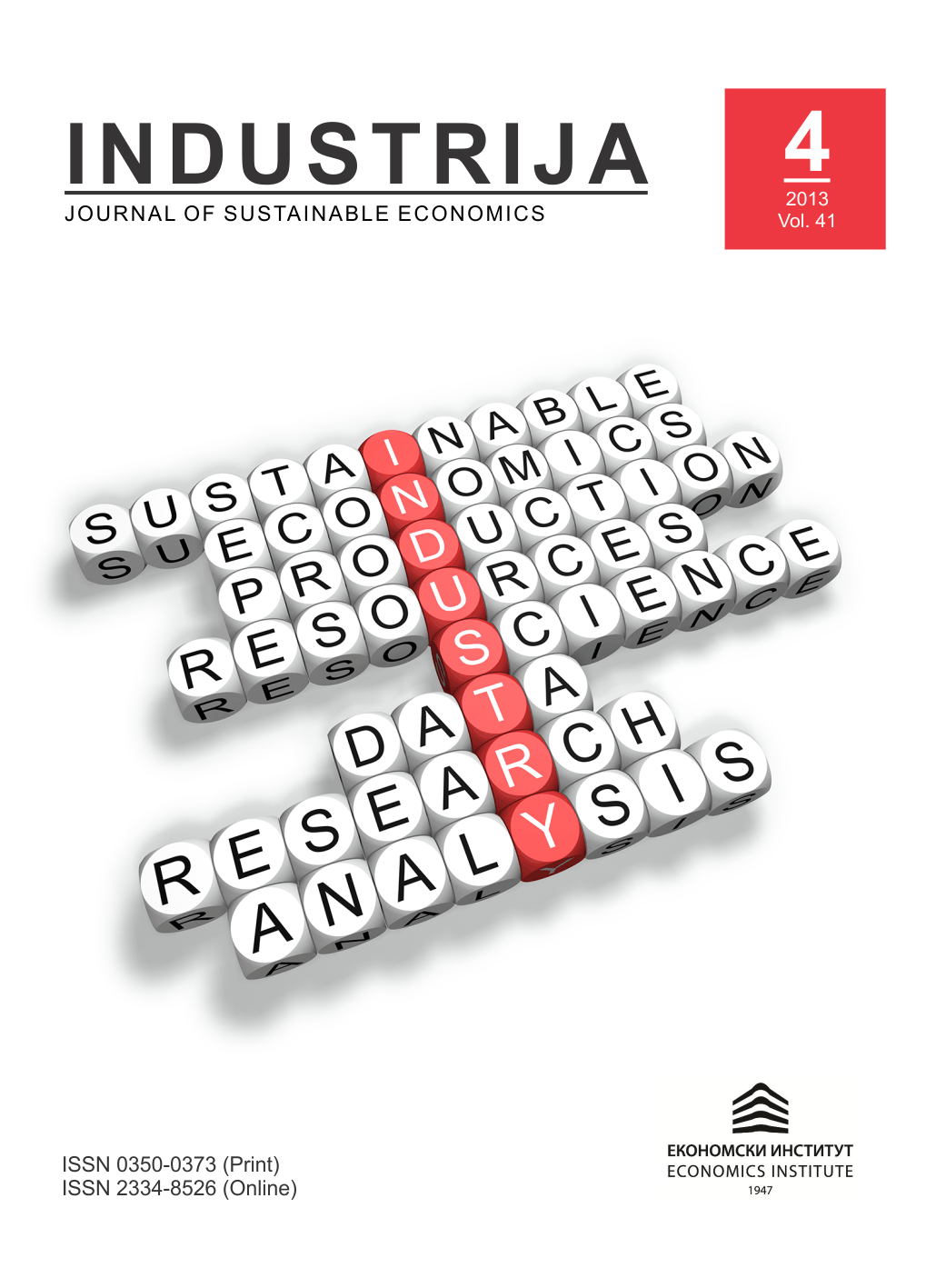Оrganizational attention deficit as sustainability indicator: assessment and management
Abstract
The aim of this paper is to contribute towards dealing with the attention indicator in a standard Pressure-State-Response (PSR) framework of sustainable development. Hence, the daily information overflow is identified as a pressure variable adversely affecting the attention. This is manifested by an increased likelihood of missing key information when making decisions, diminished time for attentive reflection, difficulty in holding others’ attention, as well as by decreased ability to focus when necessary, which are symptoms of the so-called organizational attention deficit disorder - OADD. As to the state variable there were combined techniques from cognitive neuroscience and applied sciences in order to objectively measure the incidence of OADD. In particular, the use of neuropsychological procedures for objective assessment of OADD will be summarized. Namely, few attention diagnostic tests of the Amsterdam Neuropsychological Tasks Program (ANT) will be considered for determining the focused, shifted and sustained attention. As intervention measure attention strengthening techniques is applied. In particular, in research were proposed the neurofeedback technique as response variable and have shown its effectiveness in coping with the OADD. This approach represents a new perspective in social psychophysiology and expands the potential applications of ANT and neurofeedback methodology.
References
Barkley, R. A. (1998). Attention-deficit hyperactivity disorder: A handbook for diagnosis and treatment. New York: Guildford Press.
Davenport, H.T., Beck, C. J. (2001). The Attention Economy, Harvard Business School Press, Boston, Massachusetts.
De Sonneville, L.M.J. (1999). Amsterdam Neuropsychological Tasks: A computer-aided assessment program. In: B.P.L.M. den Brinker, P.J. Beek, A.N. Brand, F.J. Maarse & L.J.M. Mulder (Eds.), Cognitive ergonomics, clinical assessment and computer-assisted learning:Computers in psychology (Vol. 6, pp. 87-203). Lisse: Swets & Zeitlinger.
Fetaji, B., Pop-Jordanova, N., Zorcec, T. & Markovska, S. (2007). Measuring E-learning Effectiveness Through Testing E-content and Attention Correlation. In G. Richards (Ed.), Proceedings of World Conference on E-Learning in Corporate, Government, Healthcare, and Higher Education (pp. 293-298). Chesapeake, VA: AACE.
IAEA-IEA (2001). Indicators for Sustainable Energy Development, Joint IAEA and IEA Contribution to CSD-9, New York.
Kropotov JD. (2009). Quantitative EEG, event-related potentials and neurotherapy, Elsevier Inc.
National Research Council (1999). Our common journey, National Academy Press, Washington DC.
Pop-Jordanov, J. (2003). Indicators for Sustainable Energy Development from a Negentropic Perspective, Original Paper, Clean Techn. Environ. Policy 5, pp. 273-278; Published also in (2004): Technological Choices for Sustainability, (Sikdar, S.K., Glavic, P., Jain, R., Editors), Springer, pp. 305-316.
Pop-Jordanov, J., Markovska, N., Pop-Jordanova, N., Simoska, S. (2004). Occupational Entropy and Mind Indicators for Sustainable Energy Development, International Journal of Green Energy, Vol.1, No.3, pp. 327-335.
Pop-Jordanova, N., Markovska-Simoska S., Zorcec, T. (2005). Neurofeedback Treatment of Children with Attention Deficit Hyperactivity Disorder, MASA Contributions, Sec. Biol. Med. Sci., XXVI 1, pp. 71-80.

